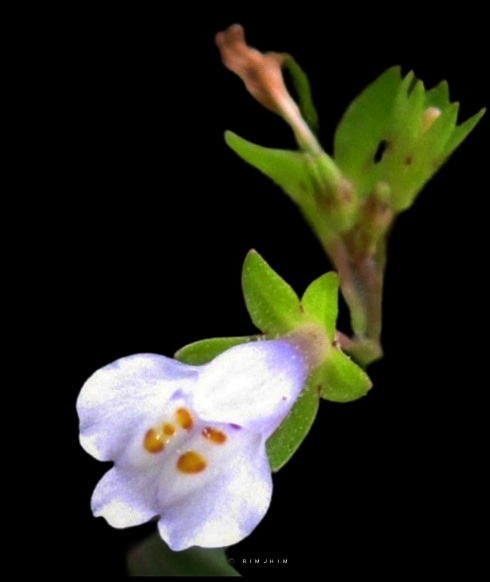Japanese mazus, Asian mazus • Nepali: ताप्रे झार Taapre Jhaar, मालती झार Maalati Jhaar
Botanical name:Mazus pumilusFamily:Mazaceae (Mazus family)
Asian mazus is found growing as a Forb/herb in wet grassland, along streams, trailsides, waste fields, wet places and edge of forests, grassland on mountain slopes. It grows to 15 cm. Basal leaves early deciduous or few to numerous and sometimes rosulate; leaf blade obovate-spatulate to ovate-oblanceolate, 2-6 cm, membranous to papery, base cuneate and decurrent, margin coarsely and irregularly toothed or pinnately parted with 1 or 2 lobules, rarely subentire, apex entire or obscurely and sparsely toothed. Stem leaves opposite or few alternate. Racemes terminal, elongated to apically fascicled, usually 3-20-flowered, lax. Pedicel 3-12 mm. Calyx campanulate, 3-8 mm, enlarged in fruit or not; lobes ovate, almost as long as tube, apex acute. Corolla white, purple, or blue, ca. 1 cm; lower lip middle lobe smaller than lateral lobes, slightly exserted, obovate; upper lip lobes ovate-triangular.

Leave a Reply